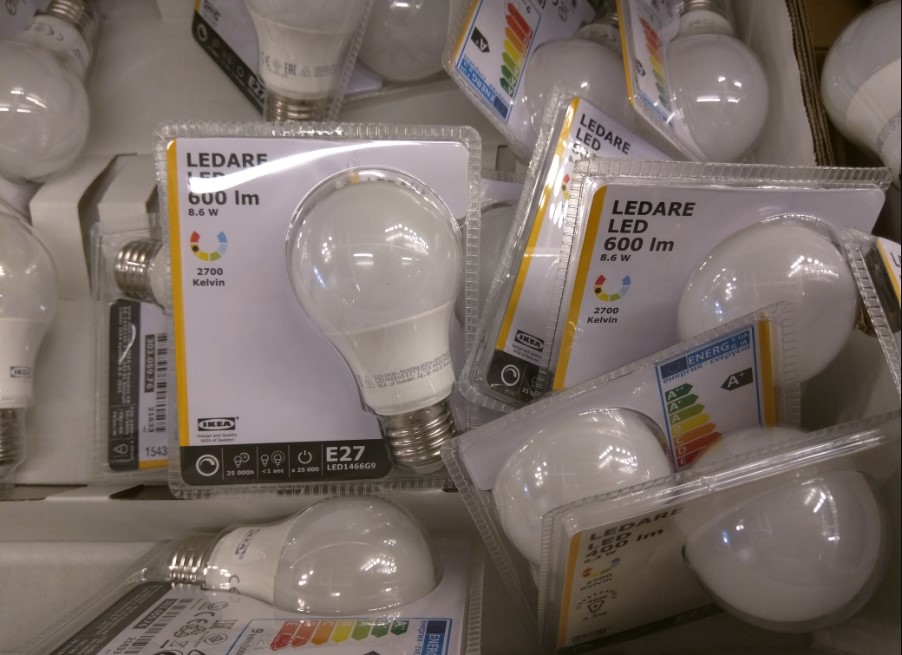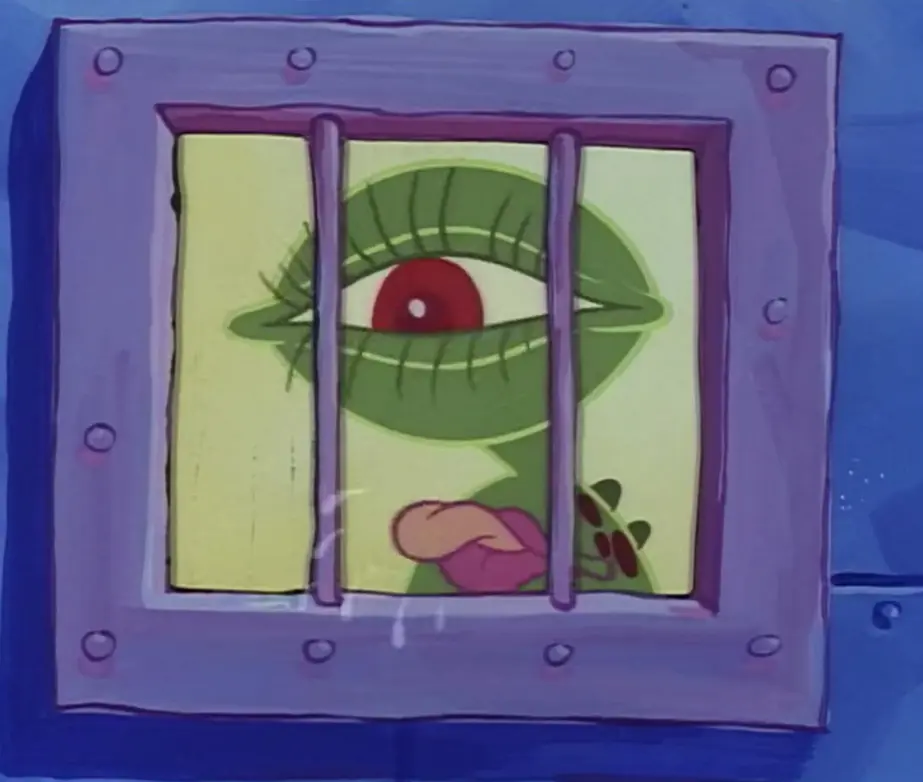- cross-posted to:
- green@lemmy.ml
- cross-posted to:
- green@lemmy.ml
Incandescent light bulbs are officially banned in the U.S.::America’s ban on incandescent light bulbs, 16 years in the making, is finally a reality. Well, mostly.
Nobody’s talking about the real casualty of this shift. What’s going to happen to all the jokes about “how many (insert category of person here) does it take to change a light bulb?” now that people don’t have to regularly change light bulbs anymore?
No single LED lightbulb I’ve ever purchased lasts as long as they claim. infact, many have been outlasted by existing incandescent bulbs in my house. your joke fodder is safe.
I don’t know what kind of shit LEDs you’ve been buying but I’ve yet to ever have to replace one. Been using them for many years already.
deleted by creator
You have to give the industry some time to circle the wagons and enshittify led bulbs so that they only last 10,000 hours
You’re going to want to replace them when they stop getting security updates…
I’ve had one or two LED bulbs die, which is why I switched to buying “energy star” rated bulbs. As part of the accreditation process, they need to certify the lifespan
I started switching to LEDs 8 years ago. Every single one of them is still working. It used to be that bulbs should be changed every year or two.
My mom buys these cheap LED bulbs from Amazon and about half burn out quickly (probably 10% are DOA).
We have 100% LEDs throughout our fifth wheel (about 30 of them), and they are all still going strong (all installed in 2015, and used daily since then).
I think there’s a serious difference in quality available and it certainly shows.
Honestly as somebody who’s been watching big clive’s channel I would never recommend anybody to buy those cheap LEDs from Amazon because there’s a non-insignificant risk that they may burn your house down.
I’ve been using LED bulbs for a good number of years, I’ve only had one or two die on me. The longevity alone makes them much better than incandescent, but then they use a tenth the power.
My favorite is the A15 Edison style. That’s the appliance size, smaller than the standard A19. The A15 fits in everything so I only need to stock one size.
Don’t just buy cheap shit. And get your wire/vakuum/kitchen appliance checked for spikes.
And here I am imagining walking down the street one day and there’s a crazy hobo wandering around waving a vacuum cleaner in everyone’s face screaming “CAN YOU SEE THE SPIKES? ARE THEY THERE?”
you assume much.
deleted by creator
I buy all my stuff at Target, Walmart, or Home Depot. I have to replace my LED bulbs just as much if not more than I ever had to with Incandescents. In my last house I had incandescents that lasted the entire 8 years I was there, while I replaced other leds multiple times.
deleted by creator
I can tell you from having looked into becoming an importer of those things maybe a decade ago that the very EU rules for the CE mark (a requirement for them to be allowed to be imported for sale into the EU) cover things like failure rates (max 5% in the first year), minimum hours without failure (10,000 and models must actually be tested on it in order to be certified), loss of brightness with age, minimum CRI and so on.
So yeah, buy them from chinese sellers on Amazon or Aliexpress and you’re importing them yourself for personal use in which case no such rules need apply (if doing that I recommend purchasing only from those sellers that mention their product has a CE mark).
In the US, were “consumer right” tend to be this wierd thing that only wimpy eutopean worry about, I suspect there are nowhere the same level of rules (probably the bare minimum for mains wired devices which is pretty much “won’t just randomly kill users”), which would mean the stuff carried by the local sellers is China-quality-at-American-prices, so basically the Aliexpress quality but with extra cost to pay the fat bonus of the CEO of the large retail surface.
PS: As a side note to anybody interested in using the CE mark as the minimum standard for their own LED light bulb purchases, look at the packaging: there are very specific rules for the packaging itself, so for example it has to list the brightness (in lumen) with more proeminence than the wattage and also has the energy rating (including a standard design with a graph of horizontal bars) so these things are pretty easy to spot from the packaging of the light bulb.
Just fucking yesterday out of 12 Nisko high CRI bulbs around the house one just stopped working. All of them are mere one year old.
And those high cri ones are the most expensive ones. Lets see how much time the others survive… ill keep you posted.
My LED bulbs have hilariously short lives. I suspect the wiring in my apartment is just not that great because lights do flicker from time to time. But that didn’t seem to hurt incandescent bulbs. I’m lucky if my LEDs last even one year, never mind the 10 or 20 some of them claim.
What am I supposed to do, but my overhead light fixtures on a UPS?!
You are right that local electricity might be in play. I’ve lived in the same house for 6 years and I’ve not had a single light fail. We replaced most bulbs when we moved in because they were mostly CFLs. It’s been great. But I wouldn’t put it past LED manufacturers, even name brand ones, from cheaping out on the bad power protections.
deleted by creator
I think one of my 1st gen philips hue color bulbs just went out a couple weeks ago. Of course I’ve yet to open up the fixture and confirm it since the other one in there is still plenty bright.
I’ve also had very different results, depending on brand. Definitely avoid the cheap stuff
Now I have the opposite problem: brands and styles change too much. What do you do when one bulb of a multi-bulb fixture burns out, but they’ve all outlasted the brand or style? I do already have a drawer full of LED bulbs that I replaced so the fixture would match, and can’t always find a fixture with fewer bulbs
deleted by creator
I have a bunch I bought in 2016 that are still going strong. Only stopped using them because we wanted cooler lighting and they’re all pretty warm. We’ve had like 4 or 5 out of the original 50 or so that stopped working though.
The only LED bulbs I’ve bought that haven’t blown within a year are my Philips hue bulbs. They are expensive but they are all I’ll buy now, and my girlfriend and I love setting them to relaxing colors in the evening while we relax together on the couch
I don’t remember the last time I changed a light bulb at home
Don’t worry, many have shitty drivers that will fail and poor cooling that will kill the diodes.
deleted by creator
There’s a tradeoff with CFL bulbs between longevity and instant action. The normal expectation for a light bulb is to have it at full brightness the moment you flip the switch, but the first CFL bulbs to market often took minutes to reach peak output. Longer if they were cold.
So to meet consumer expectations, manufacturers began designing bulbs that would, on ignition, damage themselves in order to reach peak output faster.
It’s no wonder the CFL bulb failed as a product, you would either get a bulb that would never be bright enough when you needed it, or you got a bulb that would burn itself out just as quickly as any incandescent for twice the price.
deleted by creator
In 2008(ish) we rewired our house (built in the '20s) and replaced every fixture. We probably had 25 CFL bulbs (most in ceiling fans), and had no losses for the several years that we owned the house after that. But I remember paying way more for bulbs in years before that and having them all fail fairly quickly.
Or the old riddle of having to match 3 lights to 3 switches with only one guess, since the solution relied on the bulb getting hot and LEDs barely get warm.
Wait what is this riddle
I think it’s along the lines of “you’re in a room with three lightswitches. They control three lightbulbs in a different room (so you can’t see them from the room with the switches). You get some time to use the switches, and then you go to the other room and have to guess what switch controls what lightbulb. You aren’t allowed to go back and flip the switches again once you leave.” The solution generally is to flip one switch, leave one off, and flip the last one on for awhile but then turn it off just before you leave to go to the other room. The lightbulb that’s lit obviously goes with the switch you flipped on, and the other two are off. One of these two will be warm though, because it was recently turned on, and that one goes to the switch you flipped on and then off.
“A windowless room contains three identical light fixtures, each containing an identical light bulb or light globe. Each light is connected to one of three switches outside of the room. Each bulb is switched off at present. You are outside the room, and the door is closed. Before opening the door you may play around with the light switches as many times as you like. But once you’ve opened the door, you may no longer touch a switch. After this, you go into the room and examine the lights. How can you tell which switch goes to which light?”
The solution is:
- Turn two switches on, leave one off
- Wait a few minutes
- Turn one of the “on” switches off
Now, when you enter the room, you’ll have one lit bulb, one warm unlit bulb, and one cold unlit bulb, letting you solve the riddle.
It’s an old riddle where a room has three lights and outside the room is the panel with three switches. They’re not labeled and you don’t know which switch controls which bulb. You’re allowed to switch any two, then you get to open the door and you have to determine which switches control which lights.
The solution is, that you flip switch #1, wait five minutes and then flip switch #2. Then you immediately go into the room.
Two lights will be on, meaning the bulb that’s off is the third switch. Then you feel the bulbs that are on: the one that’s warm already is the #1 and the other that’s on but still cool is #2.
LEDs don’t heat up like that so this technique is broken.
Mine heat up. Not hot, but definitely warm at the base. LED bulbs convert 25-50% of the electrical energy to light. The rest is heat. So a 9W LED bulb is a 4-6 watt heater.
As someone living in the EU where incandescent bulbs have been banned for over a decade, I can assure you that changing lightbulbs is still a thing. Not as frequently, but it happens, especially if you buy cheaper brands LED bulbs. They definitely does not have the longevity that they advertise.
The U.S. is pretty late with this, compared to the European Union. Only a few special bulbs are still sold here. Apart from that, the only allowed lighting technology is LED.
Tell that to the bar I was at last night in Palermo. They had a string of festoon lights going down the laneway and every one of them was incandescent. I noticed the same in Taormina. In fact, Italy seems pretty far behind the rest of the EU when it comes to environmental concerns…but that’s for another thread.
Are you sure they were incandescent bulbs and not just LED bulbs copying the incandescent style? They make a lot of decorative LED bulbs now with straight sections of LEDs to imitate the glowing wire of an incandescent.
Are you talking about an Edison bulb?
Having grown up in the era of incandescent bulbs I remember the fancy white bulbs made with frosted glass being more expensive than the totally transparent ones you could see the glowing filament inside, because the filament was irritating to look at and the frosted ones smoothed out the light for you.
I’m very amused that we’re now jumping through hoops to make skinny LEDs that can fake the look of the old filaments nobody wanted to look at back then, and those are now the fancy expensive ones.
This is one example of the LED bulbs I was describing, but there’s plenty of different styles of these being made
Definitely. I’m an electrician, so my eyes are usually drawn to these type of things. Light fittings, outlets, switches, etc.
They are not sold anymore, but whatever is left and working can still be used. Many people also bought a ton of incandescents before the selling stopped (tHe lIgHt is sO mUcH bEtTeR!!!)
tHe lIgHt is sO mUcH bEtTeR!!!)
narrator voice: “but it was not”
It can be. Cheap LED lights with low quality AC rectifiers are awful. If those are your point of comparison then yes, incandescent light is better (more steady).
Of course that difference goes away if you just get a better LED light.
Some also have terrible CRI. Nothing like giving everything a subtle green or purple tint.
yeah, i was referring to current tech. First LED or those mercury vapor bulbs were basically useless.
You can definitely get “current” LED bulbs with bad hardware inside still today. See: Everything made by NOMA.
Maybe they still run on “new old stock” bulbs until they are used up. But even if they do, they clearly didn’t do the math. I’ve upgraded all my lighting to LED and binned all my incandescent stock.
I think to update the string of lights you’d need to change transformer. Household bulbs have a driver in the bulb that converts the 230V to the ~12V the bulb uses. But for that string of lights, they’d need to get an electrician (or someone who knows what they’re doing)
While you may need to replace the whole strand, and can’t just swap in individual bulbs, the strand itself has the resistors needed to let the LEDs function, instead of the individual bulbs.
Specialty lights are still being sold. Plenty of British pubs have special incandescent lights. They are usually quite dim.
This applies to all the things, unfortunately. It must be nice to have a functional union. Even though I’m sure it’s not perfect, progress is made at a decent pace. Our country is hijacked by a cruel/angry/illiterate cult every 1-2 elections, it’s not ideal.
Well… only 11 yrs after EU… That’s not so bad.
https://ec.europa.eu/commission/presscorner/detail/en/IP_08_1909
for real though… as an American I would love if we were 11 years behind the EU in lots of other areas
Yep. Even Canada banned most common incandescent bulbs in 2014 and 2015.
You’re 11 years behind us in energy prices as well, so make the most of it.
Wondering if incandescents can still be sold as heat bulbs because that’s what they are
Yes they can. Also your fridge and oven will still have incandescent bulbs because more efficient lights aren’t great at operating in extreme temperatures.
manufacturers can still build and stores can continue selling:
Appliance lamps, including fridge and oven lights Black lights Bug lamps Colored lamps Infrared lamps Left-handed thread lamps Plant lights Floodlights Reflector lamps Showcase lamps Traffic signals Some other specialty lights, including marine lamps and some odd-sized bulbsWe have an LED light bar in our deep freezer and also our mini fridge. LEDs seem to work absolutely fine in the cold actually.
Yeah, LEDs are pretty ideal in the cold as long as they’re properly sealed from humidity. They don’t heat up your fridge extra every time you open the door. Oven lights definitely wouldn’t work unless you want a nice plastic glaze on top of the cake you’re baking.
We call them “space heaters”…
can we ban standard time and permanently switch to DST now too?
DST is the best thing ever. Who doesn’t want more daylight after work?
Oh yay it’s bright at 4am in the morning when I’m asleep.
What about 4am in the evening?
Just pick a time and stick with it
i thought we did?
oh fuck me we didn’t
Senate passed the bill by unanimous consent, although several senators stated later that they would have objected if they had known that the bill could pass. No iteration of the bill has passed the House.
WTF? Why the heck would those people have wanted it to fail and why would they vote for it if they did?
And since it got unanimous consent in the Senate, why the heck didn’t it go to the house? It’s the rare case of a bill that I think everyone likes.
To appease voters
Tell me your government is fundamentally broken without telling me…
Ha, do you live in Arizona?
What is not banned?
Surprisingly, there is a whole slew of exempt special-purpose bulbs that will continue to be manufactured, according to the Energy Department. Here’s what manufacturers can still build and stores can continue selling:
- Appliance lamps, including fridge and oven lights
- Black lights
- Bug lamps
- Colored lamps
- Infrared lamps
- Left-handed thread lamps
- Plant lights
- Floodlights
- Reflector lamps
- Showcase lamps
- Traffic signals
- Some other specialty lights, including marine lamps and some odd-sized bulbs
I mean, good for the effort, but that’s still a lot of exceptions.
If you still have a fridge or oven that takes incandescent bulbs, isn’t it better to replace the bulb than the fridge? If the point is minimal environmental impact then I think that makes sense.
That’s true, but that’s also still a lot of incandescent light bulbs. I guess you have to compromise somewhere, for now at least.
Well sure but you could just replace it with an LED bulb…
Edit: missed the word oven. My question is just for fridges
I don’t think you can put an LED bulb in an oven, well I mean I guess you could try but good luck with that, I don’t imagine it would last very long at all.
You can put an LED bulb in a fridge though, I put LEDs in mine. I don’t really need to worry that much about my oven though because it’s a small oven and doesn’t have a light in there to begin with.
I mean why would you force LEDs for ovens in the first place. The place they are in is supposed to get hot. And that’s what the ineffeciency in incandescent light bulbs normally is. They get hot. Doesn’t seam like an issue that they make the place that’s supposed to get hot hot.
The enefficiency is that they take up nearly a magnitude more power and last a fraction of the time, meaning you have to manufacture 20x more of them.
Having said that, I’m not sure if I support this change. People are already switching light bulbs naturally. It saves energy, doesn’t heat up, and lasts longer. You don’t really need much more incentive than that. I wonder if this will have any meaningful impact whatsoever. And if it doesn’t, why are we banning items for no societal benefit?
Apparently they do have a long list of exemptions, at least. I think legislative focus would be better spent on increasing renewable energy production. Solar, hydro, wind, nuclear.
I hate to break it to you, but the heating element in the oven uses a magnitude more energy than that little old incandescent light. And the energy otherwise lost from an incandescent light is lost to heat, which just so happens to be the entire purpose of an oven. So in the case of an oven, there’s actually no more energy lost than the heat it’s already designed to generate.
Besides, have you ever tried putting electronics in an oven? LED’s don’t exactly like heat ya know…
I don’t know about the energy efficiency, but the life time of the bulb is a variable that they intentionally designed that way. They know how to make an incandescent light bulb that will last indefinitely. The industry colluded with each other to manufacture bulbs that have to be replaced frequently.
…Why not both? It makes sense for it to be illegal to sell a device that consumes more than 6x the power of the equivalent and dies significantly more frequently. I searched for statistics and it seems like 20-30% of bulbs sold are incandescent. That means well over half the energy consumption of light bulbs still comes from them. It’s low hanging fruit that can have an almost immediate impact, even if it’s not enough on its own.
Those 20~30% are likely either a) appliances like people are mentioning. Stoves, fridges, etc. Which have reasons for being incandescent for which the law gives exemptions and b) old bulbs that would have inevitably been changed to incandescent anyway
I really think this law isn’t going to make a significant difference in the % of incandescent bulbs over the next few decades. We’re essentially going to transition at the same rate to a fully LED, whether the law existed or not.
So my question is - what’s the point? We waste political capital and time that could be better spent doing meaningful things. And we can do things that don’t arbitrarily restrict the choices of our citizens.
It’s paying lip service without actually doing anything. Theatre.
Make our energy production 100% renewable and it doesn’t matter in terms of carbon emissions if your bulb uses 4x more energy (of course ignoring production emissions, but just for the sake of rhetoric)
This article is dogshit, and those are not the current exemptions. DOE revised the definition of a general service lamp on 2022 to include the majority of reflectors. The rest have miniscule sales and have technical limitations that make LED replacements difficult. It’s not a lot of exemptions. When was the last time you bought a left hand thread or a colored incandescent lamp?
deleted by creator
Seems like it’s a theft deterrent since they won’t work in “normal” sockets?
You need a history expert for this one. I want to say theft deterrent, and possibly different voltages for niche applications. Also Need Flanders Leftorium.
I don’t get the exception for colored incandescent. LEDs come in whatever color you want, or get a smart bulb to change it at will
Some of these bulbs might be difficult to find in LED and there might be other considerations like shape, heat, dimmer compatibility, etc… Replacing fixtures could represent a significant burden in these cases and thought there are many exceptions listed they likely represent a small percentage of overall usage.
I’ve seen dimmer compatible LEDs and, even better, LED bulbs that have built in control of light intensity and even color. I’ve even seen bulbs capable of playing music through bluetooth!
Shape I don’t really see as a concern, as any shape an incandescent bulb can be produced in, a LED bulb can also be. And then some, as the LEDs can be set up, twisted and bent into some very imaginative shapes and angles.
And heat is not ready a concern. You can touch most LED bulbs with your bare hands with no risk of severe burn. Unless very high wattage is in play, at most, a LED bulb will be warm to the touch.
Try not to dismiss everything so quickly. I came up with those in 5 minutes but a committee of experts could find many more. When the exceptions were written they had a reason. A few examples:
-
In a traffic fixture, the heat that the incandescent bulb generates often serves to melt ice, and early traffic fixtures with LEDs did have icing problems. Replacing the fixtures would represent a significant burden.
-
An LED wouldn’t survive in an oven and oven lights aren’t on for very long either so what would it matter?
-
A bulb in a refrigerator could be exposed to condensation.
-
Dimmer compatible LEDs require pulse width modulated dimmers. Incandescent dimmers are often resistance dimmers.
The exception are there to make sure that a $1 part doesn’t render a $1000 appliance inoperable. Replacing the appliance would undoubtedly generate a ton more carbon than using an incandescent and the rule doesn’t say that LED bulbs are prohibited just that incandescent bulbs for those uses are not yet banned.
I’ll also point out that LEDs are made of plastic and essentially become ewaste at the end of their life so there is a trade off to consider too.
LED refrigerator bulbs are already a thing; bought one recently by accident, when looking for a very low power/low brightness for a bed side table.
Those, apparently, are no longer a concern.
Screw in LED bulbs with built in brightness and color control, that you can command from a phone application or through a conventional remote control, are already common, thus rendering conventional dimmers obsolete.
Why keep those? To my very limited knowledge, dimmers can require expensive and extensive installation.
I have seen LED traffic lights with built in anti frost measures and the expenditure to have those replaced is not a good argument to keep that particular use of incandescent lamps around.
LED low power requirements, paired with their long service life, enables traffic lights to be independent from the power grid, through the use of solar panels and batteries, keeping it working even when severe weather disrupts energy distribution. LEDs are also brighter and easier to see from afar.
There may be very particular cases where incandescent bulbs still do not have an alternative but to say they are irreplaceable is a disservice.
I’m not trying to be dismissive, I’m trying to be demanding.
-
Several of these exceptions are unexpected. Oven light, sure: LEDs can’t survive the heat. That makes sense. Plant lights because you probably need full spectrum. And traffic signals because they’re odd shape and fixtures probably last decades, but the rest?
Bug lights? A regular LED attracts fewer bugs than an incandescent bug light …. Unless they mean an attractant like fora bug zapper
Flood lights? Reflector lights? Fridge lights? Colored lights? Why aren’t these all LED?
OPs list is wrong, that’s why. DOE revised the definition of a general service lamp in 2022 to include the vast majority of reflector lamps. Bug/appliance/left hand thread/etc are all sold im tiny numbers and therefore exempt.
I was just quoting the article. ¯_(ツ)_/¯ I assumed, perhaps wrongly, that the writer knew what they were talking about, which I guess was wrong of me.
That’s totally fair. I happen to know a lot about this topic and didn’t read the article at first, and I also meant OP as in whoever posted the article, not you. I could have been more helpful here, sorry.
Plants don’t need much, if any, green light (they reflect it). LEDs can be made to be full spectrum. I can think of no reason why anyone would want incandescent lights for plants. Even before cheap high power LEDs were a thing, people usually used high pressure sodium lights.
Black lights
Nice.
They’re lights that emit in the ultraviolet part of the spectrum for the purpose of making fluorescent materials light up. To the human eye they don’t look quite black, but more like a darkish purple.
But yeah, I too always found the name deliciously ironic.
deleted by creator
Wrap it up boys, we’ve solved climate change.
Is your point we should not be taking steps to decrease electricity usage because this step by itself doesn’t fix the entire problem?
People will complain about climate change than complain about LITERALLY EVERY SINGLE ATTEMPT to improve it. Isnt this what people are always saying needs to happen?? That individual action isnt the way but we need legislature to fix everything? What did people think would happen if governments try to fight climate change? That our lives would in no way shape or form be affected?
The answer is everyone else has to fix climate change. Everyone but me
It’s just a joke, we need to do much more
The EU introduced a limitation to how much power electric devices can consume in off or standby mode.
0.5 watt normally, 1 watt if they have a status display and 2-8 watts if they’re connected to a network.
On a yearly basis this saves as much electricity as one of the member states (Romania) used in a year.
My point is that small things add up to huge numbers.
Exactly. From this particular article/policy:
Similarly, it projects that the rules could cut carbon emissions by 222 million metric tons over the next 30 years.
LED bulbs aren’t really even a small thing.
going from a 100W bulb to a 15W bulb, or a 60W bulb to a 2.5W bulb (that’s the actual conversion for the bulbs i’ve actually bought on amazon and am currently using, not hypothetical guesses) across 20-30 bulbs in a single house is a real actual big difference in energy savings.
Now instead of throwing out a little glass and wire, I get to throw out entire light fixtures with non-replacable LEDs soldered onto cheap PCBs that fail in about the same time as an incandescent light bulb!
I’m all for the energy efficiency of LEDs, but the cheap light fixtures replacing bulbs are a bad trend that needs to die, but they’re easier to wire and last longer on paper, so they’re getting installed everywhere by default.
So don’t buy non-replaceable fixtures?
How is removing incandescent bulbs from the marketplace going to increase the installation of fixtures with non-replaceable components, when such fixtures never used incandescent bulbs in the first place?
It can be difficult. I started asking around about getting recessed lighting installed in my kitchen and they all wanted to install disk lights.
These seem even worse since not only do you have to replace the fixture when it burns out, but you risk having to replace all the fixtures when it varies by color temperature or trim
They should charge you less for using cheaper material, reduce labor costs etc and charge the regular rate (like they fucking die before) to install a recessed fixture.
Overall, capitalism and rampant, irresponsible consumerism is to blame for all these quick fix solutions and lack of repairable devices. There is not one person to blame but ourselves for continuing to buy into this bs (literally)
For what it’s worth I’ve had one of those integrated overhead fixtures in my kitchen for about 6 years. It hasn’t failed yet. The overall shape of the fixture which we like also wouldn’t be possible if the bulbs were replaceable.
They’re not all bad, there are many bad ones though and the light bulb form factor is better for repairability (but there are bad LED bulbs too).
Your sample size of one is useless
Well actually I’ve got one in my laundry room too and that one hasn’t failed either so it’s really a sample size of two. But either way if you don’t like it that’s why I said for what it’s worth.
Still useless
This has everything to do with implementation and complications from late-stage capitalism and not the actual technology
Im going to replace a two year old light because of this non replaceable light crap.
how long until there’s a right wing black market for incandescent bulbs like gas stoves prob…
My right wing dad already stocked up
“F*ck efficiency!”
Actually very on brand. hmm…
Cure rage in certain circles
Can’t wait for this to be the hot button issue in certain presidential campaigns this cycle.
There are other uses of incandescent bulb beyond lighting. We use them to heat small enclosures in the winter and we have light to work in the space if that needss to happen. To use heat tape or space heaters is far more likely to catch fire.
And for those uses they aren’t getting phased out:
Surprisingly, there is a whole slew of exempt special-purpose bulbs that will continue to be manufactured, according to the Energy Department. Here’s what manufacturers can still build and stores can continue selling:
Appliance lamps, including fridge and oven lights
Black lights
Bug lamps
Colored lamps
Infrared lamps
Left-handed thread lamps
Plant lights
Floodlights
Reflector lamps
Showcase lamps
Traffic signals
Some other specialty lights, including marine lamps and some odd-sized bulbs
And my lava lamps require the heat they put off.
You can’t be groovy with LEDs
Isn’t that the worse way for your outcome? Isn’t there a more efficient method that reliably heats without light ?
Removed by mod
Isn’t that a pretty flawed design flaw then. Why not use a heater as a heater rather than a light bulb ? Or like a heat lamp ?
Removed by mod
No not in the contest of a heater. Think that’s just being silly now. Something we’ve required since the dawn of humanity.
A waste of only 2% is still a waste.
As far as I understand, energy is conserved. Light inside a closed box will ultimately turn to heat too.
I wonder if this will have any effect on the film industry…
I had always used incandescent bulbs in practicals but now there are LED bulbs made specifically for film sets. Household LED bulbs are usually a mess on camera with ugly color spikes and/or flickering.
I’ve been lighting almost exclusively with LED these days aside from some HMI’s, but even those are starting to get LED competition, at least for smaller ones.
Look at the Power Factor (PF) and Colot Reproduction Index (CRI) of the LED light bulb.
If the former is something like 50% then it means it has a cheap power rectifier inside (little more than a bunch of diodes) which doesn’t at all filter the power fluctuating nature of AC (basically all it does is make the negative side of the sinusoidal wave that’s AC become positve and leaves the whole voltage variance from 0 to max and back untouched) hence the flickering.
The latter quite literally tells you how good the colors look under that lighting. You want at least 90%, with more being better.
Mind you, nowadays CRI is usually not a problem, but the whole cheap power rectification inside the bulb generally is (because a basic power rectifier can cut 10% or more of the manufacturing price of a lightbulb).
Cri is a common specification I see, even if I suspect lots of lying. Where do you find PF information? I don’t remember ever seeing it on any bulb packaging before.
Yeah, that’s the problem: PF is not mandatory to be in the packaging so it’s not usually there.
If you buy online, sometimes you can find it in the product information section.
I’ve noticed that the “usual chinese sellers” will mention it if it’s good (say, 80%) but not when it’s the cheap-converter one (50%).
Alternativelly when looking for the bulbs not likely to flicker you might also look for the “dimmable” ones, as the abiloty for a light lamp to support an external dimmer requirex a better power converter inside the bulb.
Thanks for your response! If you light events with broadcast cameras, I am the annoying video engineer behind the camera controls asking about flicker and color balance. I hope they keep making y’all’s specialty bulbs. Looks like there’s a big list of exceptions!
I would think they’ll be mostly over to LED by now.
Makes sense. Nonetheless, reminds me of modern washing machines. Yeah they make sense and save water but it stinks that it’s a compromise and it takes twice as long to wash. With Led bulbs it’s always a say a prayer situation to see if a particular bulb works with a particular dimmer and isn’t a flickering mess.
Typically that’s only a problem if you buy non-dimmable bulbs. There are LEDs made specifically for dimmer switches.
Disagree. Many allegedly dimmable bulbs still have flicker issues, lifespan issues, and in my experience even some dimmers that claim to work with Led dimmable bulbs have different success rates with different dimmable leds.
The other thing I think worth mentioning is that for non standard bulb shapes and sizes it is difficult to find high quality name brand LED replacements. You end up with low quality Chinese small brands in these cases. I have had higher costs and more difficulty with these types of bulbs than convential incandescent options. I’m not being luddite here, all for the change, but currently it’s not without some sacrifice. I currently don’t believe I own any remaining incandescent bulbs. Outlawing incandescent options seems premature IMO.
I don’t have a strong opinion on dimmers as I don’t have any in my house. I personally feel that cutting electricity to the bulb to control brightness is a bit outdated: I think smart bulbs are the better technology to par with LED (though I concede they’re still pretty expensive.)
Per the article, nonstandard incandescents are still allowed to be manufactured.
Led bulbs won’t even work with my garage door opener for some reason. I have to use incandescent or halogen bulbs.
electric companies started subsidizing LEDs 10 years ago at box stores. electricity use went down and the bills went up as usual. all the while still burning coal. 🤔 incentives? probably part of the same mandates taxes get spent on
Once they got the white light spectrum figured out I was fine with switching to leds. Less power, don’t get hot, last longer.
Why are Republicans mad about it?!
Because they’re driven entirely by emotion, not rationality. They were told to be angry about it, so they are. Plus, Biden or something.
When are they aren’t mad? LOL they can die mad for all I care.
Something about limiting consumer choice, but everyone purchased LED bulbs to begin with anyways…
I bet they were equally pissed off when Kmart went out of business.
Tradition
Because they were born.
Because imagining that someone might have a legitimate reason to want a product or service that a regulator might not have thought of is currently a “Republican” trait in the US.
Does anybody use incandescent light bulbs as radiators? Because it’s the only alternative use I can think of.
In the European Union we banned them 10 years ago and people just continued their lives. I wish people were as mad when books get banned, but sadly it’s not the case
Does anybody use incandescent light bulbs as radiators?
Yes. I’ve done it personally a couple times.
Because it’s the only alternative use I can think of.
The thing about alternative uses is that they’re still real even if you can’t think of them.
Broad bans are a bad policy tool in general. Even if you believe in the progressive ideal of expert regulators making broad societal policies, a simple thought experiment shows the problem: What would it take to do the study to accurately determine all the negative effects of a ban? Not guessing, not wishful thinking, but really collecting and analyzing the information.
I wish people were as mad when books get banned, but sadly it’s not the case
When was the last time the US federal government banned a book?
Thank you. What is the usage of using them as a radiator? Am I wrong or does it seem quite inefficient?
Regarding your last question: https://en.m.wikipedia.org/wiki/2021–2023_book_banning_in_the_United_States
Once you’re doing resistive heating any resistive element is just as efficient as any other. Incandescent light bulbs have three advantages: They are cheap, easy to work with, and it’s really obvious when one is turned on.
As for your link, it’s talking about arguments about which books should be made available at school and local libraries. In no sense is that even related to the federal government banning books.
Well I’ve never said the US federal government is banning books, but I wish people were as mad when their local schools and libraries do that :-)
The link seems broken even if I copy-paste it? Wtf. It’s a Wikipedia article titled " 2021–2023 book banning in the United States"
And what is that legitimate reason here?
because they think we should be burning whale oil


























